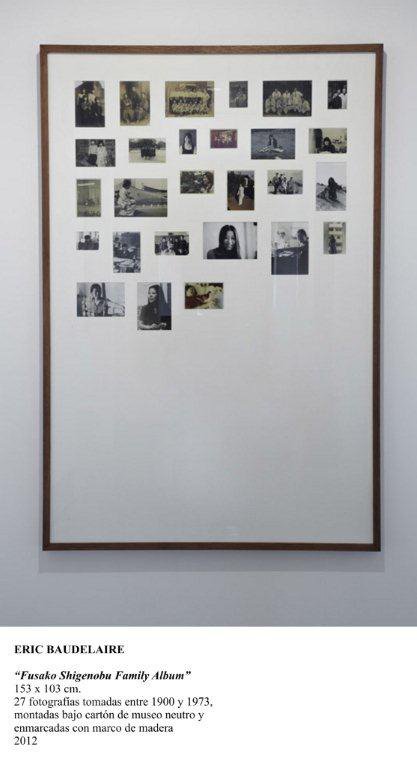Eric Baudelaire
dal 26/10/2012 al 12/12/2012
Segnalato da
26/10/2012
Eric Baudelaire
Galeria Juana de Aizpuru, Madrid
The Anabasis of May and Fusako Shigenobu, Masao Adachi, and 27 Years without Images. A documentary installation and the 66 min film unfold complex and intersecting accounts, ranging from personal stories, political history, revolutionary propaganda and film theory.

Who are May and Fusako Shigenobu? Fusako — leader of an extremist left-wing faction,
the Japanese Red Army, involved in a number of terrorist operations — has been in
hiding in Beirut for almost 30 years. May, her daughter, born in Lebanon, only discovered
Japan at the age of twenty-seven, after her mother’s arrest in 2000. And Masao Adachi?
A screenwriter and radical activist filmmaker, committed to armed struggle and the
Palestinian cause, was also underground in Lebanon for several decades before being
sent back to his native country. In his years as a film director, he had been one of the
instigators of a ‘theory of landscape’ — fukeiron: through filming landscapes, Adachi
sought to reveal the structures of oppression that underpin and perpetuate the political
system. Anabasis? The name given, since Xenophon, to wandering, circuitous homeward
journeys.
It is this complicated, dark, and always suspenseful story that Eric Baudelaire — an artist
renowned for using photography as a means of questioning the staging of reality —
chose to bring forth using the documentary format. Filmed on Super 8 mm, and in the
manner of fukeiron, contemporary panoramas of Tokyo and Beirut are blended in with
archival footage, TV clips and film excerpts as backdrop for May and Adachi’s voices and
memories. They speak of everyday life, of being a little girl in hiding, of exile, politics and
cinema, and their fascinating overlap. All of which adds up not so much to an enquiry as
a fragmented anamnesis.
(Jean-Pierre Rehm, director of FID Marseille)
“The Anabasis of May and Fusako Shigenobu, Masao Adachi, and 27 Years without Images” is Eric
Baudelaire’s second solo show at Juana de Aizpuru Gallery, following “Acontecimientos” in 2007.
Shown for the first time in Spain, Eric Baudelaire’s film is presented alongside a documentary
installation that includes archives about the Japanese Red Army, personal photographs from the
Shigenobu family album, prison drawings by Masao Adachi, an excerpt from his seminal film “AKA
Serial Killer” (1969), a printed exhibition libretto, and monochromatic silkscreen prints titled “Pictures of
Documents” (2011).
The documentary installation and the 66 min film unfold complex and intersecting accounts, ranging
from personal stories, political history, revolutionary propaganda and film theory. Stories from
imageless clandestine lives where the recurring theme is the question of images.
Nothing didactic or objective is attempted in Eric Baudelaire’s project; the point is rather to give space
to stories, accepting the idea that a history of extreme leftwing terrorism can be nothing but the
confrontation of antagonistic, ideological narratives, in a haze of fantasy, emotion, pain and
indifference.
Opening: 27 October 2012
Galeria Juana de Aizpuru
barquillo 44, Madrid
Hours: Monday to Saturday 10.30-14, closed on Sunday
Free Admission



